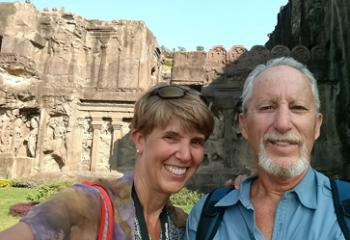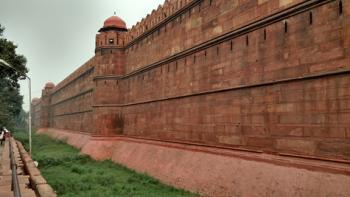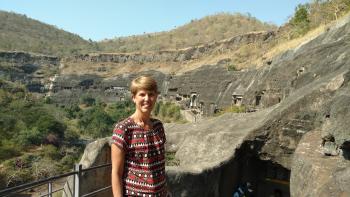India travel tips
This item appears on page 30 of the November 2019 issue.
My husband, Steve Mullen, and I took an action-packed independent trip to India, Nov. 14-Dec. 14, 2017, taking in the Golden Triangle of Delhi, Agra and Jaipur, with additional visits to Shimla, Mumbai, Goa and Aurangabad. I’d like to share some travel tips.
Steve did much of the preplanning, shaping a rough itinerary and making initial flight and lodging reservations. We found it helpful to have a contact in India, and, for travel planning and assistance, I highly recommend John M. Dar, who is now with Float & Fly Tour Pvt. Ltd. (http://floatflytour.com) and can be reached by phone at +91 999 919 9088 or by email at
• Planning a trip to India should start with deciding what time of year to go. Generally, tourist season for the popular Golden Triangle is October to March, the peak of which is December to February.
It can be surprisingly cool in the Golden Triangle in winter, down to the low 40s. From April to June, it is very hot (113°F), while July through September is the monsoon season — wet, hot and humid.
• Though we noticed air pollution all over India, the air in Delhi deserves special mention. It’s bad year-round in Delhi, especially in November, when farmers burn their crops and the winds change. Over the weekend before our departure, United Airlines canceled all flights into Delhi due to air pollution.
It also can be dangerous for people with pulmonary conditions. If you’re concerned about air quality, you may want to skip Delhi entirely or limit your time there.
• A traveler from the US will need a visa to enter India. This can be obtained electronically, but the application takes time to complete and a few days for turnaround, so don’t put this off.
• There are four apps I’d recommend setting up before you leave home: WhatsApp, Paytm, Uber and Agoda.
WhatsApp, a text-messaging app owned by Facebook, is ubiquitous in India; tour operators, drivers and guides use it. When you are setting it up on your mobile phone, you will be prompted to link the app to your phone number, as the app uses your phone number and that of others to transmit texts. To be able to contact another person through WhatsApp, enter that person’s phone number in your phone’s main contact list. (They need to have the app too.)
Paytm is the Indian equivalent of PayPal and can be a useful way to pay for goods and services. (Certain ATMs didn’t work for us, so we had to be on our toes to make sure we had enough cash. Having Paytm set up in advance would have helped; we hadn’t done that, and we didn’t have a strong-enough signal to download and set up the app.)
Uber is a popular way to travel in India and is one way to avoid pervasive transportation scams, since there is no possibility for “misunderstandings.” Though we ended up using drivers arranged through our local travel agent or hotels most of the time, it was useful at other times.
Agoda, owned by Priceline, is a hotel-booking service widely used in Asia. We’ve used it for years in many countries in Asia and have been satisfied with our bookings. We cross-reference Agoda reviews with those on TripAdvisor to make our choices.
• Transportation in India is relatively cheap, but distances can be vast. We used the following modes:
Train — A first-class train ride can be an enjoyable way to travel, especially if you have a lot of time. Unless you’re on a backpacker budget, go for the first-class ticket.
Plane — Domestic flights are relatively inexpensive compared to US prices and can save you many hours of travel.
Automobile — A private car (and driver) is relatively inexpensive. We hadn’t planned on using a private car at all but ended up using one everywhere due to the reasonable cost and flexibility of scheduling.
We loved our month in India and can’t wait to go back to explore more! It’s a big country, so even a month wasn’t nearly long enough.
INGA AKSAMIT
Kenwood, CA



